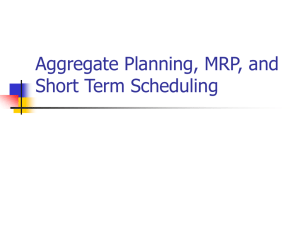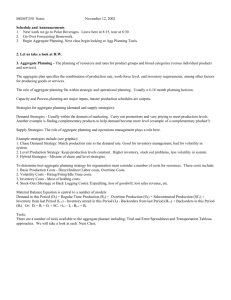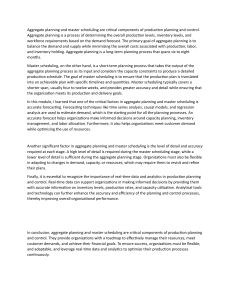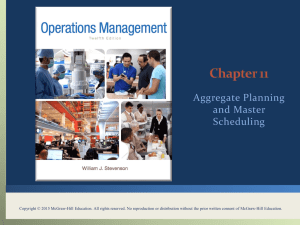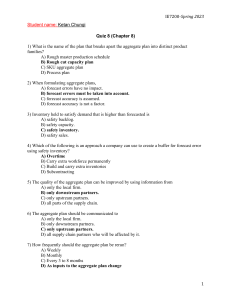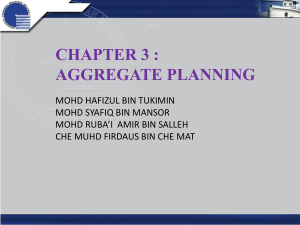CBA 390 (H/R) Chapter 13 – Aggregate Planning I
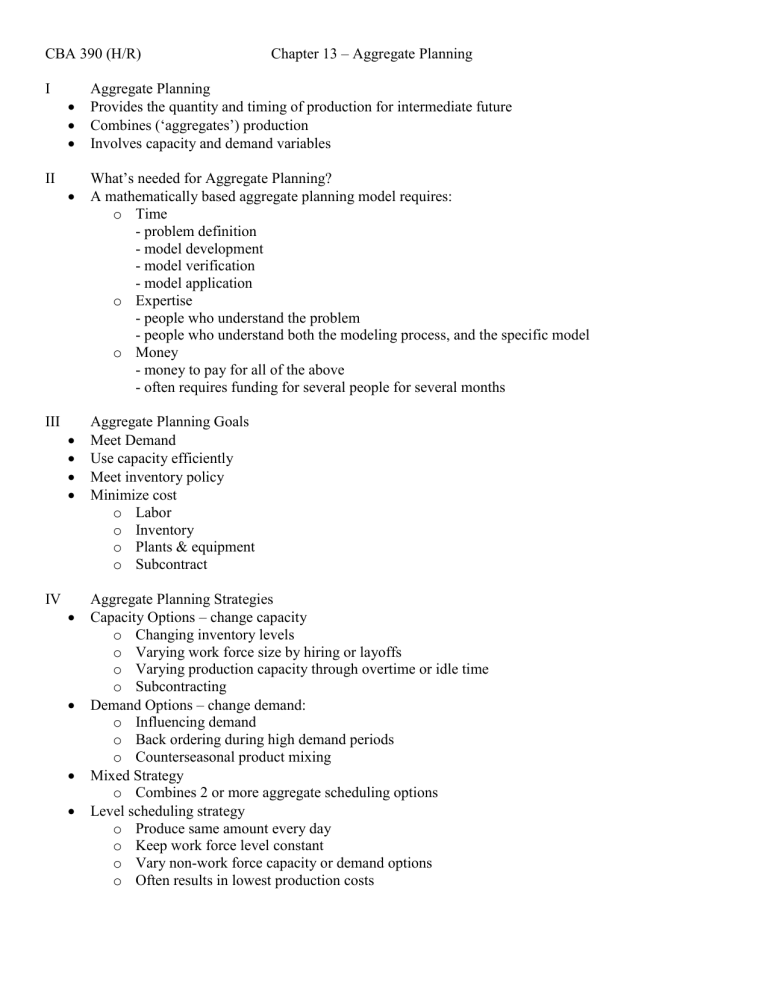
CBA 390 (H/R)
I
Chapter 13 – Aggregate Planning
Aggregate Planning
Provides the quantity and timing of production for intermediate future
Combines (‘aggregates’) production
Involves capacity and demand variables
II
What’s needed for Aggregate Planning?
A mathematically based aggregate planning model requires: o Time
- problem definition
- model development
- model verification
- model application o Expertise
- people who understand the problem
- people who understand both the modeling process, and the specific model o Money
- money to pay for all of the above
- often requires funding for several people for several months
III Aggregate Planning Goals
Meet Demand
Use capacity efficiently
Meet inventory policy
Minimize cost o Labor o Inventory o Plants & equipment o Subcontract
IV Aggregate Planning Strategies
Capacity Options – change capacity o Changing inventory levels o Varying work force size by hiring or layoffs o Varying production capacity through overtime or idle time o Subcontracting
Demand Options – change demand: o Influencing demand o Back ordering during high demand periods o Counterseasonal product mixing
Mixed Strategy o Combines 2 or more aggregate scheduling options
Level scheduling strategy o Produce same amount every day o Keep work force level constant o Vary non-work force capacity or demand options o Often results in lowest production costs
V Aggregate Planning Methods
Graphical and charting techniques o Popular and easy-to-understand o Trial and error approach
Mathematical approaches o Transportation method o Linear decision rule o Management coefficient model o Simulation
VI Yield Management
